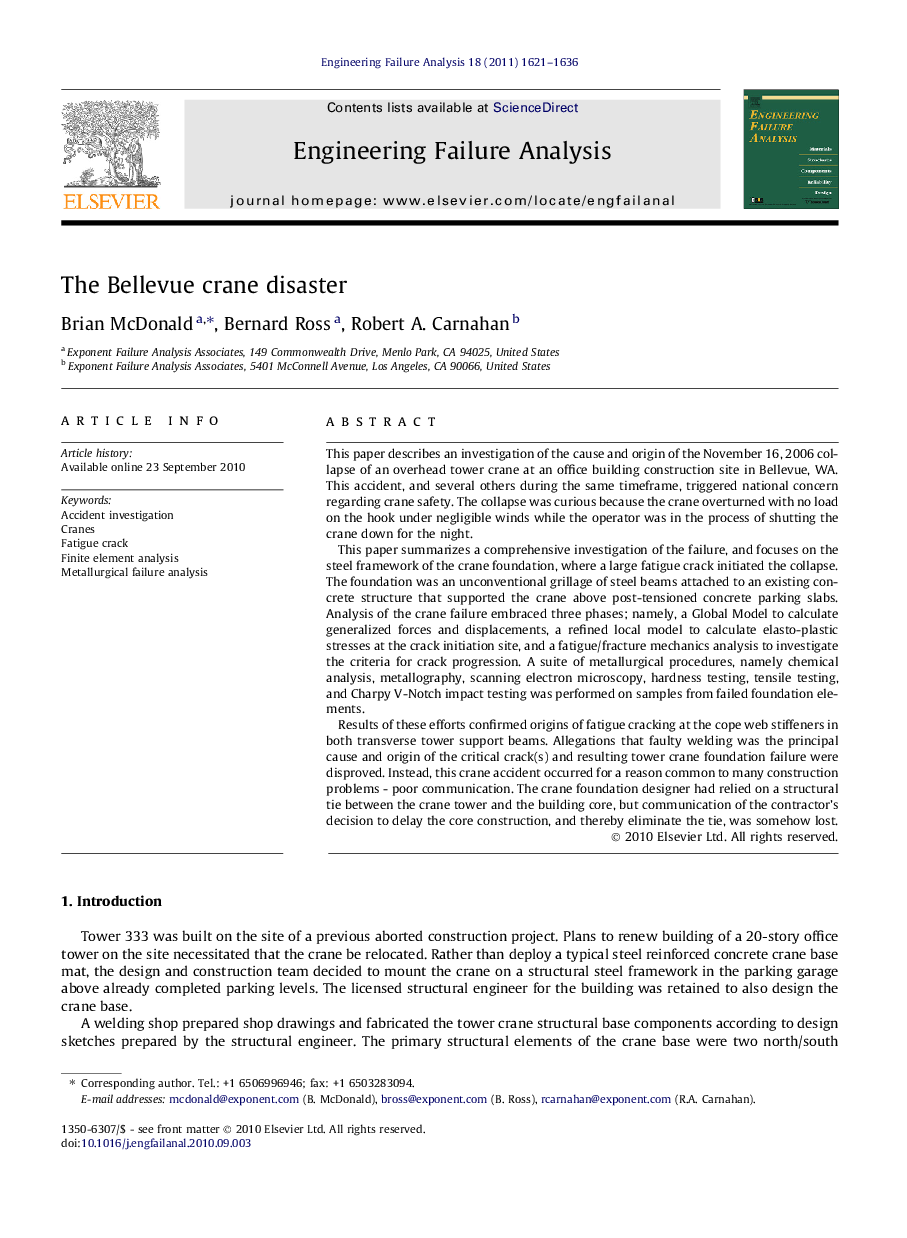| Article ID | Journal | Published Year | Pages | File Type |
|---|---|---|---|---|
| 774253 | Engineering Failure Analysis | 2011 | 16 Pages |
This paper describes an investigation of the cause and origin of the November 16, 2006 collapse of an overhead tower crane at an office building construction site in Bellevue, WA. This accident, and several others during the same timeframe, triggered national concern regarding crane safety. The collapse was curious because the crane overturned with no load on the hook under negligible winds while the operator was in the process of shutting the crane down for the night.This paper summarizes a comprehensive investigation of the failure, and focuses on the steel framework of the crane foundation, where a large fatigue crack initiated the collapse. The foundation was an unconventional grillage of steel beams attached to an existing concrete structure that supported the crane above post-tensioned concrete parking slabs. Analysis of the crane failure embraced three phases; namely, a Global Model to calculate generalized forces and displacements, a refined local model to calculate elasto-plastic stresses at the crack initiation site, and a fatigue/fracture mechanics analysis to investigate the criteria for crack progression. A suite of metallurgical procedures, namely chemical analysis, metallography, scanning electron microscopy, hardness testing, tensile testing, and Charpy V-Notch impact testing was performed on samples from failed foundation elements.Results of these efforts confirmed origins of fatigue cracking at the cope web stiffeners in both transverse tower support beams. Allegations that faulty welding was the principal cause and origin of the critical crack(s) and resulting tower crane foundation failure were disproved. Instead, this crane accident occurred for a reason common to many construction problems - poor communication. The crane foundation designer had relied on a structural tie between the crane tower and the building core, but communication of the contractor’s decision to delay the core construction, and thereby eliminate the tie, was somehow lost.
